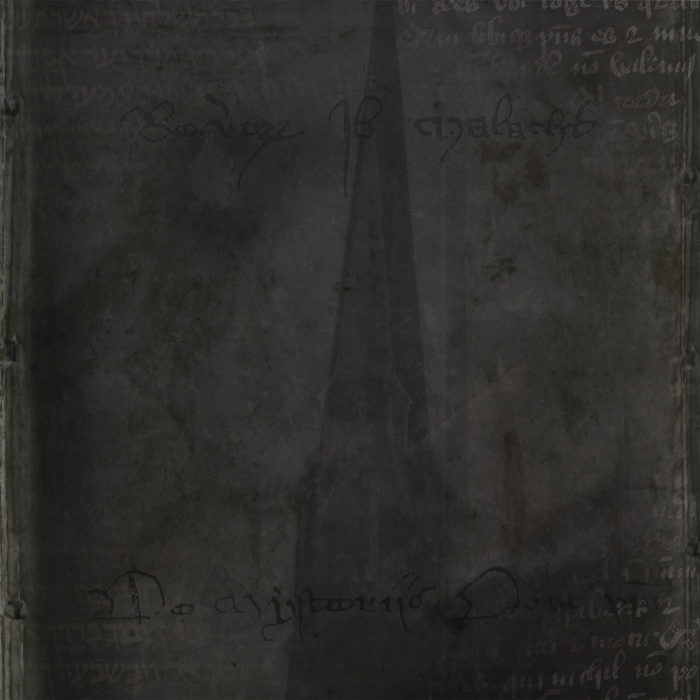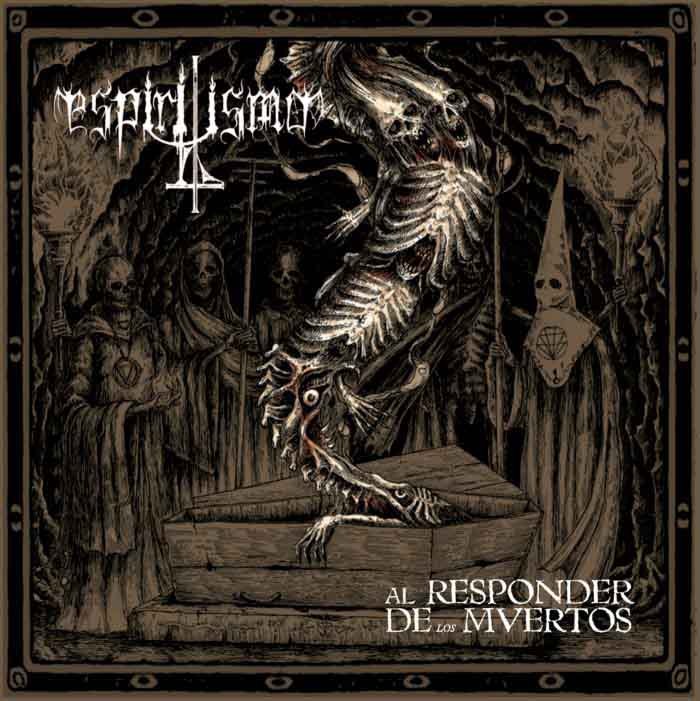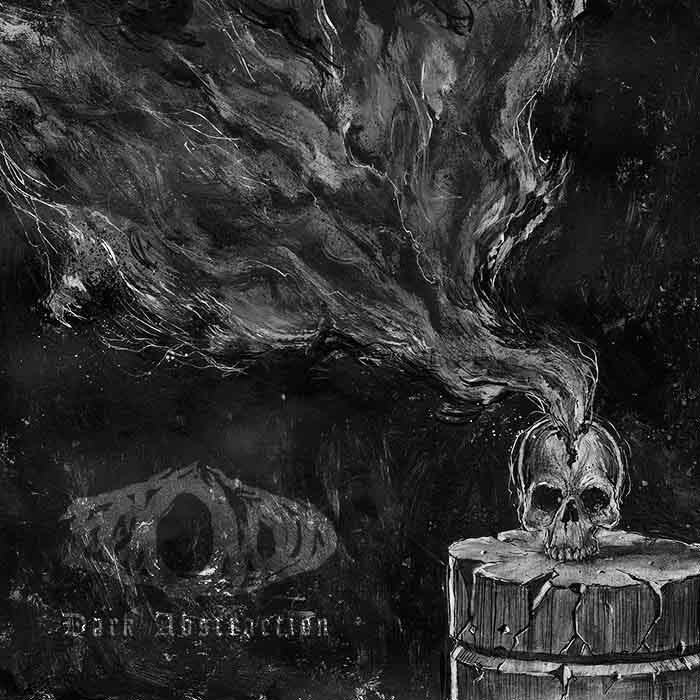
A notion has sprung out of Andreas Languetus’ mind for a project titled Gradus ad Phlegethon the sole purpose of which is not simply to study or theorize, but rather construct a viable method of transmitting the compositional techniques of ‘death and black‘ metal. Where this accumulation of illustrative techniques will take us, we cannot yet tell. But we know that it shall bring together concrete musical practices, basic contrapuntal and motif-writing techniques, as well as techniques aimed at directing the mind to appropriate states. Each of these are instrumental to the formation of a true and complete methodology that encompasses a true evolution of metal into and beyond death and black metal. Said endeavor lies in parallel, though perhaps meeting at intersections, with the search for and use of pure sound as notions for metal and dark ambient composition.
And while we repeatedly bring to bear exposition of the idea that metal must grow out of its infancy by adopting more mature, refined and complete notions of music-making, we have not yet proposed concrete methods to that effect. We have been content to give a few examples, but on the actual practice of writing music we “have said very little, and this little is not easily understood.” The idea is to have a gradual working akin to Fux’ Gradus ad Parnassum, in which complexity escalates, but also in which each of those steps is a valid style or species in itself. Like so, we shall acknowledge the equal validity of different the approaches to writing metal in its manifestly phrasal, foreboding character represented by the evolved and proper forms of death and black metal.
A circle of writers, perhaps variable in number and composition, shall develop a commentary around such a manual ultimately under the direction of Andreas Languetus. It is he who shall be our compass and the author of said future document behind closed doors. In parallel, the rest of us shall not refrain from the odd article giving out hints regarding progress and unearthed notions discussed and communally contributed to. This is a work for eternity, for the evolution of death and black metal as more than art, and rather as dangerous effluvia. We “shall not be deterred by the most ardent haters of school, nor by the corruptness of the times.”
The following is a list of either crucial and very specific exemplars, or at least viable grades and routes of musical development for death and black metal. Each of the albums below shows an insight into the artistic use of technique focused towards a goal beyond itself. With respect to the character of each, we can also distinguish a commitment to a vision that opens them to a connection beyond themselves, becoming gates for something else. The last is an observation to all would-be musicians, that there is no room for mere dabbling if greatness is sought. Freedom of expression, within a channel, from a source beyond the self; thence, an individual but intelligible craft…

Reverorum Ib Malacht – De Mysteriis Dom Christi (2014)
Walking a path of their own, Reverorum ib Malacht play a synthesis of black metal and dark ambient that oddly relies in no small manner on the vocal performance. The usage of vocals is not typical, and it is not a melodic line or a rhythmic growl identifiable as a traditional vocal line that we find here, but instead an ambient line of its own, that is not only akin to, but rather in all probability is, a meditative prayer in darkness. Phrases and the flows they instigate are present, but they are embodied in a supple yet no less horrific synth line, rather than the more typical madness of the strident guitar. In here, the percussion becomes crucial in providing a stronger body and sharpness to the movement which the music otherwise lacks for the notable absence of guitars. In praise of the involved musicians, we can say that the drumming is perfectly adequate, expressive and focused in the performance of black metal, avoiding digressions into ‘post-rock’ technique. Subtle and pleasurable, the percussive subtext would remind one of Klaus Schulze’s collaboration with drummer Harald Grosskopf in the album Moondawn (1976). Yet we also have moments of static meditation interspersed throughout the album, whose only moving piece are the almost chanted, matra like stream of vocal intonations pronounced under a constant rumble. The effect of the latter kind of passages could be compared to a raga, without implying that the same kind of rules or tradition is involved, and it gives a hint as to something that could be possible for underground metal of a transcendent kind to experiment with. When a guitar does appear, it does so unobtrussively, but providing an amplitude to the music otherwise afforded by thicker synth sounds. Upon close inspection, the variety of methodologies within a same aesthetic varies significantly throughout the uniquely formulated pieces, offering a mesmerizing and otherworldly journey clearly aimed at an absolute destructive force that also creates…

Espiritismo – Al Responder de los Muertos (2017)
Hailing from Argentina, Espiritismo expose one interpretation around the unique underground black metal styling that came about in secret, coalescing around and then arising from the sparks of the unmistakable experiments in darkness centered around a certain creative genius (who, we clarify, is not part of Espiritismo). The explosion that came after the increasingly portentous sequence of progressive manifestations signalled by Panikos, Faraón and Gevurahel consisted in such albums as Sede Demonial Sede Demonial (2003), Grima Morstua Essence of Demon’s Fire (2003)and Dreignor Dragon Morth Principios (Acto de Repudio) (2006). Espiritismo improves and refines upon these, strictly relying on the sturdy riding of a riff-base over potent and creative, yet not diggressive, drums, which carry the music forward in literal variations upon a riff-theme. Here, the phrase is everything, and is manifest by a clear riff-craft; the corresponding fluxion is sensible, yet it invariably points forward, creating a trance-like music the heavy phrases of which sustain it as sturdy columns of black energy, and never allowing itself to descend to the irrelevance of repetitious tapestry. Very little black metal provides a convincing experience of darkness allied with the clearest expression of metal technique as we find in here. An exception to the latter statement can be found in the magnificent Gevurahel C.B.M. III (2016) —a work more difficult to understand musically and otherwise, but of perhaps far greater potency.

Ectovoid – Dark Abstraction (2015)
Presenting us with what is essentially an ‘orthodox’ approach to death metal, Ectovoid composes pieces that organically embody all ideal characteristics: a progressive character in labynrinthean methodology that does not lapse but instead flows inceassantly, flexibility of pacing, strict uniformity of style and technique, and the music is allowed great breathing space. All these are accomplished without interruption, abruptness, forcefulness or digression. Very few works of death metal can boast of the accomplishments that Dark Abstraction so naturally and seemingly effortlessly encapsulates. In part, Ectovoid accomplishes this by concentrating on songwriting rather than technical or stylistic innovation, both of which are pitfalls and ultimately distractors that swallow the whole technical death metal genre —without exception and ultimately inexcusably. One of the most fascinating aspects of this death metal effort is that it has no traces of Morbid Angel or even Incantation, but rather there is the impression of an early Black Sabbath updated through decades of evolved technique, and elongated and repurposed to the aims of the death metal’s cthulean labyrinth. The strongest anchoring devices in the music are reference to tonal centers despite variety of shifting roots, local motif references, and a generally constant modality and texture. What is great about this album is that it is eloquent, varied and powerful without ever being distracted by anything that does not directly burst from each previous moment. This gives the listener the impression that every single is truly an inextricable part of the whole, leaving no room for extraneous effects or clever musical “enrichments.”
Tags: al responder de los muertos, Black Metal, dark abstraction, De Mysteriis Dom Christi, death metal, ectovoid, espiritismo, gradus ad phlegethon, Reverorum Ib Malacht


So glad to see Espiritsmo get recognition. First I heard from them was their Na.De.En.Un demo and it was awesome – one of the few black metal releases where the poor production wasn’t simply an aesthetic and actually served to enhance the music. Such a criminally unknown band.
Just sounds like Judas Priest’s Painkiller album to me.
i really like it